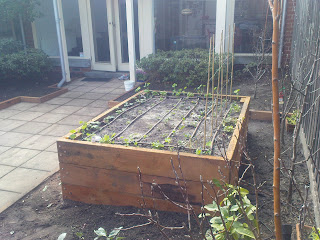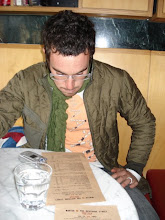





No space for your own patch nor the wine barrels?.......There are other options. You just need a bit of lateral thinking and some friendly neighbours.
When doing a patch for some clients in Northcote, we took notice of a vacant block that seemed to have been left idle for a number of years - an ideal space for a temporary vegetable garden, we thought. Living in Fitzroy and constantly struggling within our space, this was the real opportunity to construct a larger garden and start growing a wider range of veggies for ourselves.....if the owners agreed.
Leverage and barter were important ingredients. We approached the owners and suggested the idea and asked what we could offer. As it turned out they were concerned with the block's upkeep, so we offered our wipper-snippering services in return for permission to grow vegetables. A win-win really because wipper-snippering is actually good fun.
All of a sudden we had this massive inner city block to grow to our heart's content.
First step was identifying the garden bed's position; sunlight of upmost importance with the only other consideration being what we thought we could manage. We ended up choosing a central spot that gathers both morning and afternoon sunlight, set far enough back from the north facing fence to gather winter sun. The patch size measured approximately 30m2, leaving sufficient space around its fringes for deck chairs and an esky - essentials of the summer maintenance program.
Next we put the rotary hoe to work. Despite the intention of raising the bed a further 25-30cms with a mixture of soils, compost and manure, the more you can do to open the earth and help the aerobic process of the organisms that live within the soil, the better.
We then matted old soaked newspapers on the first layer of hoed earth. We did this for two reasons - to block out sunlight from the green grasses and weeds contained in our soils, which in turn kills them off, and also because the newspaper acts as a mulch which later composts and provides nitrogen to the plants. On top of this we added sugar pea straw (5-10cms) and covered it with a combination of organic soils, composts and horse manure. Like the newspaper the straw will break down over time and compost within the soils, provide rich levels of nitrogen to the plants later down the track.
With all the layers of mulch and soils added and/or churned through, it's a good idea to let it settle down and compact before planting. Give it a few winter days to let it absorb some rain and find it's level.
Then we'll irrigate ('borrowing' water from our neighbours), set out our veggie seeds and seedlings, and go on admiring our brilliant work and fine stroke of luck at finding the site and the neighbours.















